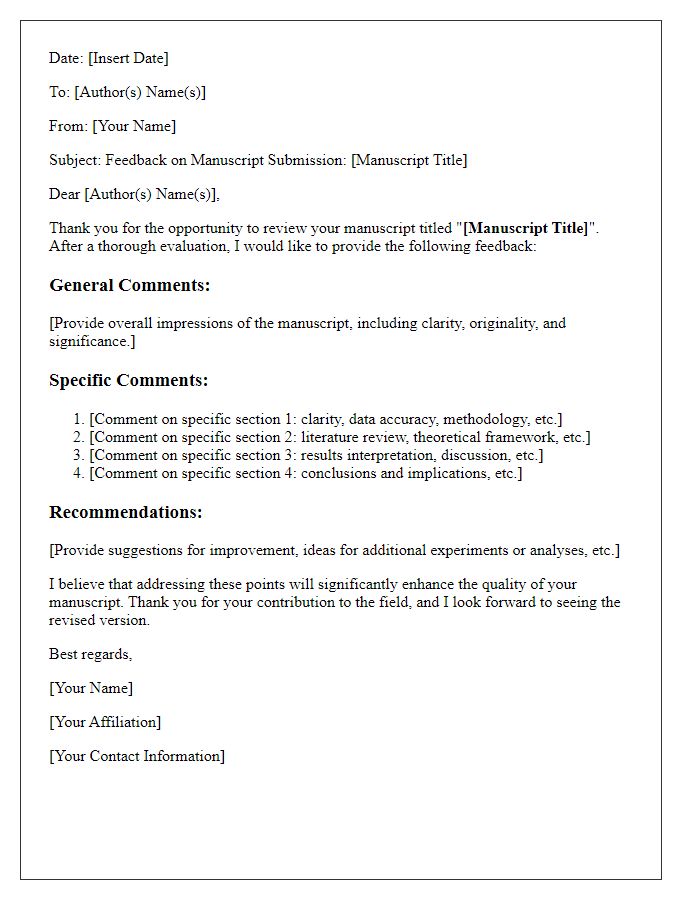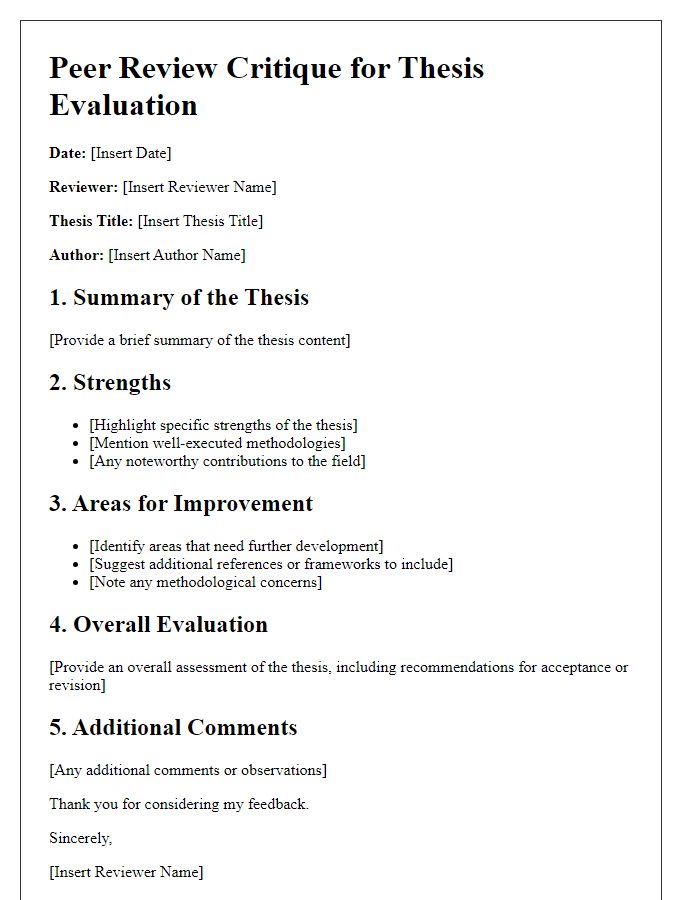Hey there! If you're diving into the world of peer reviews, having a solid letter template can make the process much smoother. This template will help you structure your feedback effectively, ensuring that it's both constructive and clear. Whether you're critiquing research or creative work, a well-crafted letter not only communicates your thoughts but also fosters a collaborative spirit. Ready to learn more about creating the perfect peer review letter? Let's explore the details!

Objective and constructive feedback
The peer review process is essential for maintaining academic integrity and fostering improvement in research and scholarship. Constructive feedback, focusing on specific areas of strength such as research methodology or data analysis, is vital for helping authors refine their work. Objective critiques regarding the clarity of arguments, coherence of structure, or relevance of references can enhance the overall quality of the manuscript. Additionally, suggesting modifications to improve sections, such as the introduction or conclusion, can provide valuable insights for the author. This evaluation should emphasize encouragement while addressing potential weaknesses, ensuring a balanced assessment that respects the author's effort and promotes scholarly growth.
Clear structure and organization
A well-structured peer review evaluation focuses on the clarity and organization of the manuscript, ensuring coherent presentation of ideas. The introduction should provide a concise overview of the research question, outlining the significance of the study. The methodology section must detail the experimental design, sample size (e.g., 100 participants), and statistical analysis methods used, allowing for reproducibility. Each results subsection needs to present findings logically, using figures and tables (e.g., Table 1 demonstrating key outcomes) to enhance comprehension. The discussion should interpret results within the context of existing literature (e.g., Smith et al. 2021), emphasizing contributions to the field and identifying potential future research directions. Finally, a summary conclusion encapsulates the main findings without introducing new data, ensuring that readers grasp the essential points efficiently.
Focus on strengths and areas for improvement
The peer review process in academic publishing frequently highlights both strengths and areas for improvement within a manuscript. In this evaluative context, strengths may include strong clarity in argumentation, robust methodology outlining the sampling techniques and data analysis processes, and comprehensive literature review that situates the research within existing knowledge. Additionally, strong engagement with theoretical frameworks enhances the manuscript's scholarly contribution. Areas for improvement often encompass enhancing the clarity of specific sections, such as the discussion surrounding results, refining the methodology for greater transparency, or addressing potential biases in data interpretation. Furthermore, enriching figures and tables with clearer legends and descriptions can aid readers' understanding. Overall, constructive feedback contributes to elevating the manuscript's quality, ensuring it meets the publication standards of reputable journals.
Concise and precise language
Peer review evaluations assess manuscript quality, relevance, and impact in the respective field. Reviewers consider aspects like originality, methodology, data accuracy, and clarity. The review process promotes scholarly dialogue and ensures rigorous standards. Engaging in constructive feedback fosters improvement, enhancing overall research contribution. Disciplines such as medicine, engineering, and social sciences follow structured guidelines for evaluations, encouraging transparency and integrity in publishing. Platforms like PubPeer and ReviewerCredits support reviewer recognition, influencing academic careers and research funding opportunities.
Professional and respectful tone
Peer review serves as a critical mechanism for maintaining quality and integrity in academic publishing. The evaluation process involves a thorough analysis of the manuscript's content, structure, and methodology, ensuring alignment with field standards. Feedback should encompass clarity, originality, and relevance, allowing for constructive criticism that enhances the research's value. A professional tone is essential, facilitating an atmosphere of respect that encourages authors to consider the insights provided meaningfully. Ultimately, the objective is to contribute positively to the scientific community while fostering ongoing dialogue and improvement in research practices.













Comments